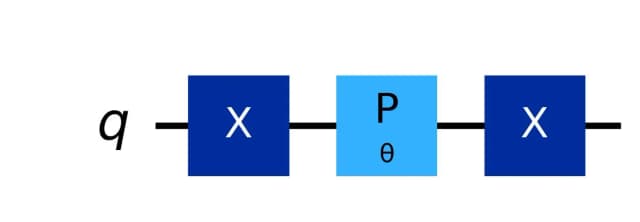Editorial
In this problem, you can transition from the zero state to the state using the and phase shift () gates.

First, apply the gate to the quantum state to transition it to the quantum state .
Next, apply the phase shift gate to the quantum state to transition it to the quantum state .
Finally, apply the gate to the quantum state to transition it to the quantum state .
suggests that this problem can be considered a generalization of Problem A1 (Generate State ).
Sample Code
Below is a sample program:
from qiskit import QuantumCircuit
def solve(theta: float) -> QuantumCircuit:
qc = QuantumCircuit(1)
qc.x(0)
qc.p(theta, 0)
qc.x(0)
return qc